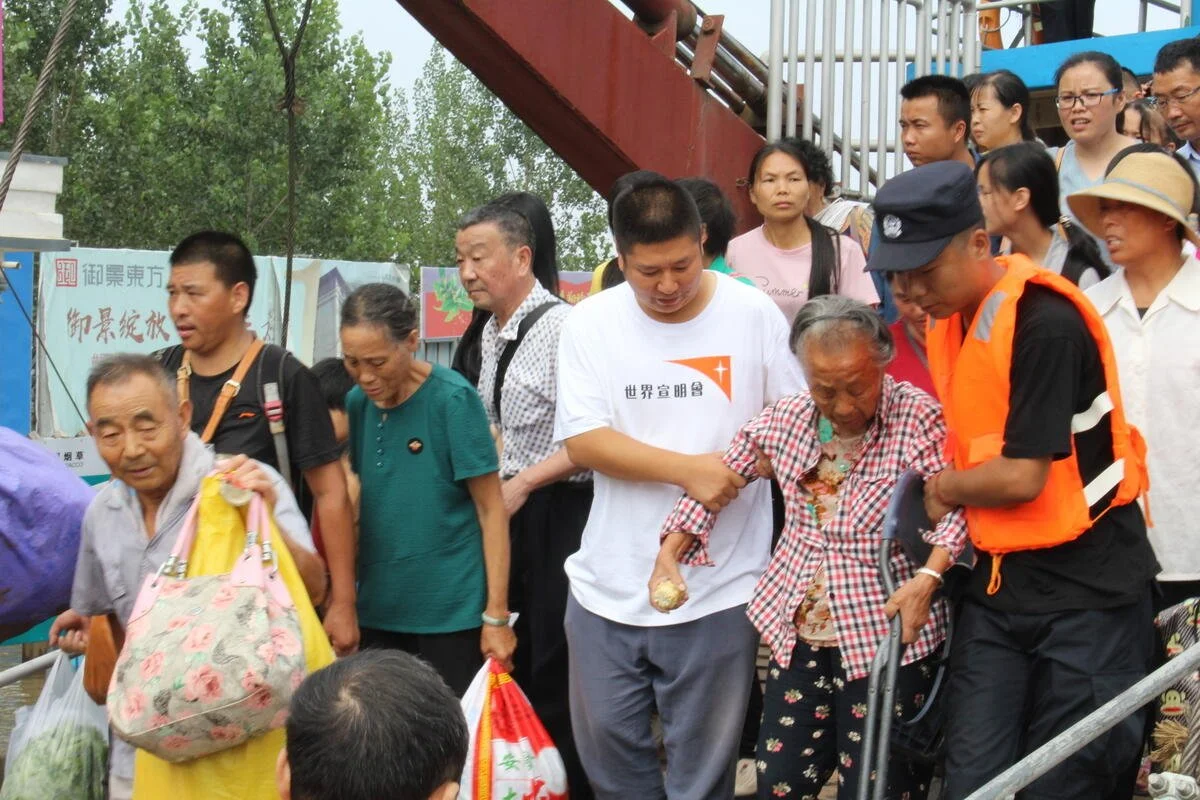PREPARING
COMMUNITIES
RESILIENCE
BUILDING
Natural disasters and emergencies can strike without warning—leaving children and families vulnerable to injury, displacement, and long-term hardship. With climate change intensifying, disasters are becoming more frequent, more severe, and increasingly unpredictable, posing serious challenges to safety, stability, and development. These events can have lasting consequences—disrupting education, damaging infrastructure, and affecting community well-being for years.
In China, World Vision has decades of experience responding to some of the country’s most significant disasters—including earthquakes, floods, and droughts. Emergency response has been central to our work from the very beginning. Today, through our Humanitarian and Emergency Affairs (HEA) and Climate Resilience Program, we carry that legacy forward—supporting communities to prepare for, withstand, and recover from crises, while working closely with local partners to respond when emergencies arise.
Provide essential resources such as food, daily utensils, and hygiene kits to affected families.
Distribute child-friendly kits to support children’s psychosocial care and emotional recovery.
Emergency response
Partner with local NGOs and communities to reduce future risks and strengthen resilience.
Develop disaster preparedness with communities, including risk maps and emergency response plans.
Conduct emergency drills and simulations
Establish early warning systems
Equip children with lifesaving knowledge through interactive self-protection activities
Disaster risk management
Qiqi’s Virtual Reality Journey to Flood Preparedness
In cities where heavy rainfall and flash flooding can disrupt daily life, it’s vital that children know how to stay safe. Through World Vision’s Disaster Risk Management program in Tianjin, children like Qiqi are gaining essential emergency knowledge—brought to life through immersive learning.
Qiqi recently took part in a disaster preparedness activity organized in her community. But instead of sitting through a typical lecture, she and her friends used virtual reality (VR) headsets to simulate a real-time emergency.
With excitement, Qiqi put on the headset and entered a digitally recreated city environment. “Suddenly the sky turned gloomy, dark clouds gathered, and then came a heavy downpour. The rain got heavier, and the streets quickly filled with water.”
The VR system prompted her to look for a safer high ground. Qiqi spotted a small hill in a nearby park and quickly moved toward it, avoiding the rising water. Once she reached safety, the scene shifted to a virtual classroom, where a kind-looking teacher appeared on the screen to explain the causes, dangers, and prevention measures of urban flooding. The teacher emphasized: "Understanding the city's drainage system and avoiding dumping trash into storm drains can help reduce flooding."
The final segment was a flood rescue simulation, where Qiqi became a responder. She gathered materials to build a simple raft and used ropes and floatation aids to rescue residents trapped by floodwaters. “Through this VR experience, I not only learned a lot about how to deal with urban flooding, but also realized how important it is to stay calm, be brave, and work together during an emergency.”
Qiqi’s experience is just one example of how World Vision is equipping children with practical knowledge by integrating technology and hands-on learning to build a culture of preparedness and resilience—starting with the next generation.
Early preparedness training gives children the confidence to recognize risks and respond safely.
Why It Matters
Disasters disproportionately impact the most vulnerable—especially children. Without preparation, families can lose everything: their health, homes, education, and livelihoods. But when communities are equipped to act, they are safer, more resilient, and better able to protect their children’s futures.
In 2024, over 94 million people in China were affected by natural disasters - 3.65 million were relocated, over 832,000 homes were damaged, and the economic loss reached US$56 billion.
China Ministry of Emergency Management & National Commission for Disaster Reduction
Support Emergency Relief for Vulnerable Families
Your contribution helps provide essential supplies—such as food, daily necessities and hygiene items—to families affected by disasters. While every emergency is different, your support ensures that affected communities receive the care and assistance they need in the critical aftermath.
Strengthen Community Preparedness
Your support helps equip communities with the knowledge and tools to face future disasters. This includes training local volunteers, conducting emergency drills, and helping children and families to better understand and respond to risks.
Together, we can build safer, more resilient communities—before the next crisis arrives.
How Can You Make a Difference
Due to regulatory compliance, we're currently only inviting donations from outside Mainland China. We appreciate your interest and support!




